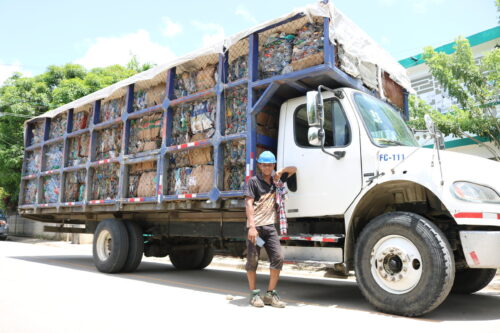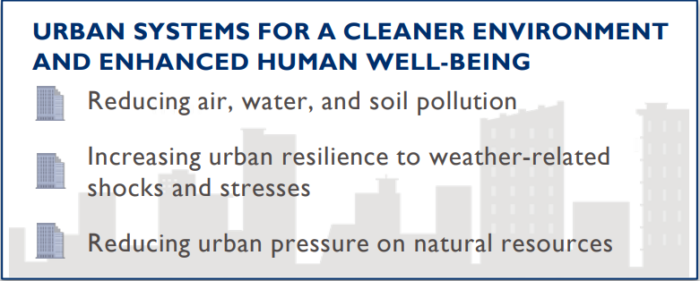New USAID Guidance Prioritizes Improving Urban Systems

Strengthening urban systems is one of the two priority areas in USAID’s new Environmental and Natural Resource Management (ENRM) Framework. The Framework is designed to give USAID staff a vision for integration of investments in environmental and natural resource management with economic growth and social development. In addition to improving urban systems for a cleaner environment and enhanced human well-being, the ENRM Framework also focuses on improving natural resource management for self-reliance.
The Framework emphasizes that the sound management of natural resources and the competitiveness of cities are inextricably linked. While urbanization can be a tremendous opportunity––cities are the primary engines of economic activity, accounting for 80 percent of global GDP––too much of this growth is unplanned, unsustainable, and occurs in the absence of economic opportunity.

These unsustainable patterns of urban development are at the root of the widespread contamination and depletion of natural resources. Environmental problems from poorly managed urbanization harm human health; threaten critical land, freshwater, and marine ecosystems; drain public budgets; hamper cities’ competitiveness; and serve as a drag on national-level economic growth and the Journey to Self-Reliance.
Proactively managing environmental risks helps sustain livelihoods, enhance human health and well-being, maintains critical services, and save scarce public funds for use in health, education, and security. To increase the positive effect of urbanization on national economies, cities must both reduce the negative environmental impacts on their residents, infrastructure, and natural-resource base, and also manage the threat posed to cities by poor natural-resource management in surrounding areas by focusing on three goals, outlined below. While these goals require some distinct programmatic approaches, they largely depend on broader strengthening of the same urban institutions and systems.
Reducing Pollution: Air pollution is the single-largest environmental health risk, causing nearly seven million deaths around the world annually. In New Delhi, the annual average concentration of particulate matter in the air exceeds the Air-Quality Guidelines set by the World Health Organization by more than 12 times, and a recent study determined that air pollution was responsible for nearly a quarter of all infant deaths in sub-Saharan Africa from 2001–2015.
Reducing Urban Pressure on Natural Resources: Consumption and demands from urban and peri-urban areas drive significant use and extraction of resources, and the concentration of people in cities makes them key lever points to transform markets. For example, in many cities in developing countries, charcoal is still a main source of household energy. The production of charcoal contributes to deforestation, which, in turn, has a negative effect on local species, ecosystems, and communities, and can also contribute to an increased risk of flooding in surrounding areas.
Increasing Urban Resilience: Poor management of natural resources and infrastructure within cities is amplifying the impact of weather-related shocks and stresses, including heat waves, droughts, and intense flooding, which 70 percent of cities already experience. Ninety percent of urban areas are coastal, which makes them more susceptible to rises in sea levels and powerful storms. At the same time, estimates suggest that 40 percent of the world’s urban expansion is taking place in informal settlements and slums, where people are increasingly vulnerable to a wide range of shocks and stresses.
Proposed USAID Priorities for Urban Areas
Urban waste-management, water and sanitation, energy, transport, and other systems need strengthening with a comprehensive and integrated approach to address the three priorities identified above. In addition to enhanced sector-specific programming, USAID will pursue three cross-cutting programmatic priorities:
- Strengthening the governance of municipalities and utilities to adopt the inclusive management of natural resources.
- Improve strategic, transparent, and inclusive planning processes.
- Develop innovative partnerships, including with new and underutilized partners, especially the private sector.

